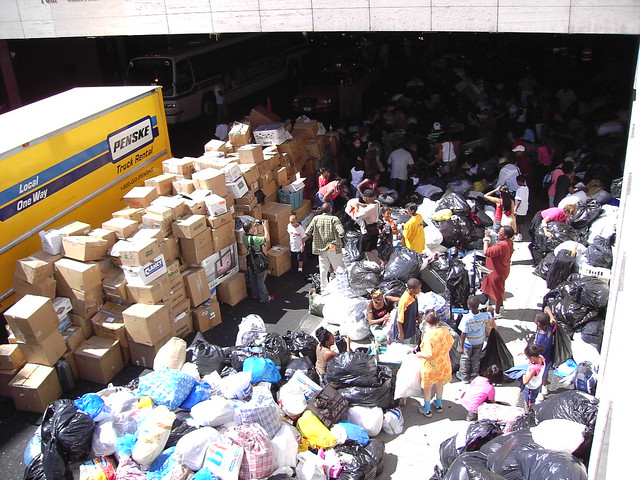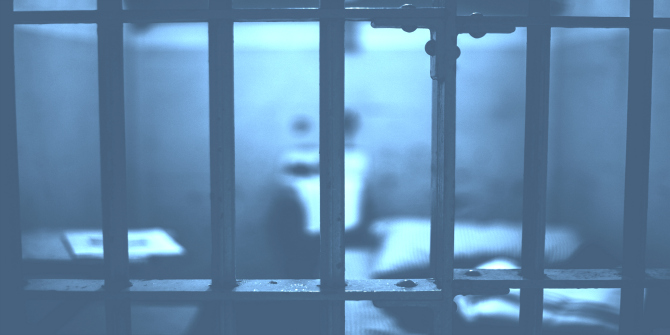 Coming Home to New Orleans documents grassroots rebuilding efforts in New Orleans neighbourhoods after hurricane Katrina, and draws lessons on their contribution to the post-disaster recovery of cities. With chapters on rebuilding narratives, socio-economic factors, and volunteer initiatives, this rigorous book demonstrates the fascinating range of cultures that continue to shape this unique city, concludes Richard Martin.
Coming Home to New Orleans documents grassroots rebuilding efforts in New Orleans neighbourhoods after hurricane Katrina, and draws lessons on their contribution to the post-disaster recovery of cities. With chapters on rebuilding narratives, socio-economic factors, and volunteer initiatives, this rigorous book demonstrates the fascinating range of cultures that continue to shape this unique city, concludes Richard Martin.
Coming Home to New Orleans: Neighborhood Rebuilding after Katrina. Karl F. Seidman. Oxford University Press. April 2013.
Hurricane Katrina, which struck America’s Gulf Coast eight years ago this month, was “the deadliest United States hurricane in over 75 years” (p. 3), as Karl F. Seidman confirms in his new book. Up to 1,440 people died in the storm and the resulting flooding, while a million people were forced to temporarily relocate. In New Orleans, nearly three quarters of the city’s homes were damaged or destroyed. Those returning to the city faced a momentous challenge to rebuild it, as anyone familiar with the recent HBO series Treme will know.
Seidman’s book is a remarkably thorough account of how six neighbourhoods in New Orleans have attempted to rebuild following the devastation of Katrina. Using interviews, maps, tables, charts and photographs, he documents in minute detail the complex processes and multiple organisations involved in recovery efforts. In contrast with much recent commentary on New Orleans – such as Spike Lee’s damning documentaries on the official response to Katrina – Seidman’s tone is deliberately measured, though his study does expose severe failures on behalf of both local and federal governments.
At its strongest points, Coming Home to New Orleans provides an immaculately researched guide to disaster recovery, as well as raising broader questions about urban development in the United States today. In clear prose, Seidman analyses the bewildering array of agencies involved after the hurricane hit – each with its own priorities (and acronym!) – while outlining the pitfalls such bureaucratic complexity generates. For instance, it took 22 months for an official rebuilding plan for New Orleans to be agreed, while the final federal assistance package for funding the city’s schools took five years to emerge. Amongst the other missed opportunities and failed projects Seidman discusses is an aborted reality TV series about the rebuilding of New Orleans that ended up costing taxpayers $1.9m.
More positive are Seidman’s accounts of grassroots action. Amidst the multi-million dollar grants, intricate funding structures and endless grant applications are stories of local residents, volunteers and student interns from other parts of America performing essential and unglamorous maintenance work. Notably, Seidman explains how the large Vietnamese American population in Village de L’Est, led by a local pastor, achieved a new political agency in New Orleans through efforts to encourage people to return to the area after its flooding. The successful organisation and distribution of resources in the darkest of times has strengthened feelings of community spirit in the neighbourhood and has given its residents a greater visibility throughout the city as a whole.

Yet, the rebuilding of Village de L’Est also involved a fascinating example of the tensions that can arise between the desires of a specific neighbourhood – in this case, the idea that trailers on a site owned by the Catholic Church be reserved for local residents – and the wider requirements of the city, which include the need to be fair to all citizens, regardless of location or religion. Difficult political and ethical questions are at stake in such clashes, though Seidman’s prosaic conclusion – that “effective and equitable mechanisms” are needed for resolution (p. 119) – rather downplays the larger issues involved here. We often promote the positive connotations of a ‘neighbourhood’ without considering how a strong local identity for some can, at the same time, be a source of exclusion and unfairness to others.
Familiar to many through the television series, Tremé is the subject of another of Seidman’s case studies. This area has been celebrated for its role in African American history, especially given its contribution to jazz and other musical traditions, yet in the aftermath of Katrina the number of black residents in Tremé was down by 62%. Indeed, again and again, Seidman notes how communities in New Orleans have lost a much greater proportion of their black residents, while efforts to attract home-owners back to the city have been much stronger than provisions for those who rent. Physical rebuilding has proved easier than correcting social inequalities, and deep-rooted problems continue to dog the city. The initial hopes, following the flood, that rebuilding New Orleans offered a chance to create a more socially, racially and spatially equitable city have largely been dashed.
That’s not to ignore the very real achievements that have been made in bringing New Orleans back from catastrophe. In the book’s final chapter, Seidman reaffirms just how important grassroots action throughout the city has been to the overall rebuilding process. Yet, after a series of compelling case studies, Seidman’s wider recommendations for future urban recovery projects seem somewhat disappointing. In stressing terms like communication, participation, transparency, collaboration and accountability, he merely repeats the banal language that dominates contemporary public discourse, especially surrounding urban regeneration, and which often alienates the very communities it is supposed to benefit and empower.
New Orleans, of course, remains far from banal. Indeed, in assembling such detailed material on different neighbourhoods, Seidman’s rigorous book demonstrates the fascinating range of cultures that continue to shape this unique city. In some respects, Hurricane Katrina has made New Orleans and its residents seem even more exceptional, given the immense difficulties returning to the city has entailed. As one local activist put it, “You realize that everybody who is living in the city made an intentional decision to live in the city. No other city in the world could say that” (p. 173).
——————————–
Richard Martin completed his PhD in Humanities and Cultural Studies at Birkbeck, University of London in 2012. He previously worked on housing policy for the Commission for Architecture and the Built Environment (CABE). He has taught at Birkbeck and Middlesex University, as well as creating a series of events and courses at Tate Modern. His first book, The Architecture of David Lynch, will be published by Bloomsbury in 2014. More details on his work can be found at: http://richardgmartin.org. Read more reviews by Richard.





